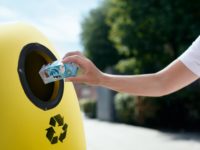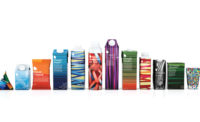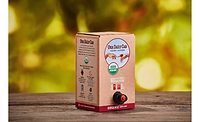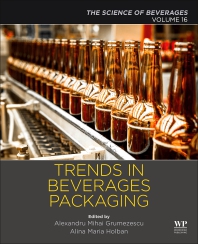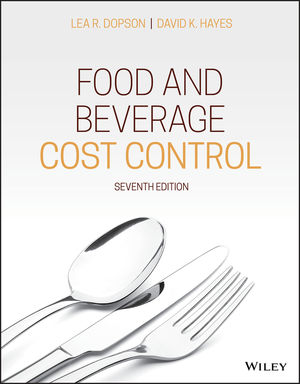Carton, pouches and bag-in-box answer calls for sustainability
Alcohol, non-alcohol beverage categories see value in sustainable packaging formats

Image courtesy of Tetra Pak Inc
As rising demand for sustainable packaging solutions has led to rapid adoption of such packaging in the food and beverage industry, a recent report from Fortune Business Insights estimates that the global sustainable packaging market size was valued at $310 billion in 2022, projected to be worth $330 billion in 2023 and reach $518 billion by 2030.
According to the report, paper and paperboard, as well as the bags and pouches segment are dominating the market.
“Bags and pouches manufactured with sustainable materials are highly reusable. The carbon footprint during the manufacturing, transportation and distribution of bags and pouches is significantly lesser than the bulkier packaging that creates more waste,” the report states. “They cut down transportation and shipping costs and are lightweight and compact, owing to which several end-use industries utilize them.”
Meanwhile, the report notes that paper and paperboard material are high in demand, further driving market growth.
“Paper and paperboard material is a renewable and biodegradable packaging solution as it can be easily recyclable,” it states. “The material is also crucial in eliminating the carbon footprint and is highly cost-effective. Using paper and paperboard for packaging highly contributes to sustainable practices and promotes a greener environment, owing to which the material is gaining a huge demand from packaging manufacturers.”
Pedro Goncalves, vice president of marketing for Tetra Pak U.S. at Tetra Pak Inc., Denton, Texas, describes market demand for packaging materials as being driven by various factors, including consumer preferences and sustainability goals.
“It’s a dynamic market and it’s more important than ever for brands to stay connected with what’s at the forefront of consumer minds,” Goncalves says. “Consumers want products they can feel good about purchasing. At Tetra Pak, we are continuously working to increase the renewable content in our cartons and hold steadfast in our journey to create the world’s most sustainable food package.
“One way we’re doing this is by offering innovations such as paper-based straws and sugarcane-based plastic layers and caps made from renewable materials, allowing us to reduce the package’s carbon footprint,” he continues. “In 2023, we sold 10.4 billion plant-based packages and 12.6 billion plant-based caps. That’s a testament to how innovative food technologies can pave the way for more sustainable and alternative approaches to food production.”
Goncalves also notes that aseptic packages are meeting consumer demand for longer lasting products. These packages waste less food and can store goods more efficiently without sacrificing quality, food safety or nutrition, he says.
Galina Smirnova, marketing and new market project manager at Smurfit Westrock Bag-in-Box, a division of Smurfit Westrock, Dublin, Ireland, says that despite a decline in some beverage categories, demand for bag-in-box packaging is either growing or more or less remaining stable in different markets.
“This is because bag-in-box and Pouch-Up are clearly seen as cost-effective packaging solutions, answering the sustainability demands of the modern consumers,” she says. “Bag-in-box is often used in the HoReCa: restaurants, hotels in the drink dispensers, which allows to save up to 80% of the packaging waste, and also in the refill stations in shops. There is still a huge potential for the bag-in-box market in terms of products and market share.”
Consumers want to do more for the planet and they’re looking for brands to help. We’re seeing more and more brands share their sustainability stories and certifications directly on-pack, both to educate consumers and create transparency.
Rising to the occasion
As environmental issues are increasingly on the mind of consumers, experts highlight how cartons, pouches and bag-in-box packaging can help beverage brands meet the call for sustainability.
“Consumers want to do more for the planet and they’re looking for brands to help,” Tetra Pak’s Goncalves says. “We’re seeing more and more brands share their sustainability stories and certifications directly on-pack, both to educate consumers and create transparency.
“At Tetra Pak, our cartons are primarily plant-based as they are made mainly from paperboard, a renewable material from forests certified by the Forest Stewardship Council (FSC), and other controlled sources,” he continues. “All Tetra Pak cartons sold in the U.S. and Canada can carry the recycling logo and Forest Stewardship Council logo. It may sound simple but ensuring that the recycling logo is clearly visible on the package is one of the best ways to encourage consumer recycling practices.”
Smurfit Westrock’s Smirnova notes that an increasing number of companies are opting for bag-in-box and Pouch-Up packaging to brand themselves as sustainable alternatives.
“Their marketing strategies revolve around this choice of packaging,” she says. ”Some companies are adding bag-in-box and Pouch-Up to their packaging options to meet their sustainability objectives and to answer the consumer demands.”
When it comes to which beverage categories are turning to these formats, Smirnova points to wine, spirits, water, juice and soft drinks for the packaging’s convenience, cost-effectiveness and ability to keep beverages fresh for a longer period after opening.
“Ready-to-drink cocktails often choose bag-in-box or Pouch-Up to create a home bar experience. Juices and nectars and other soft drinks to maintain freshness and extend shelf life without refrigeration — to reserve taste and nutritional value,” she says. “Water in bag-in-box starts from 5-liters for convenience of use, water quality and better brand visibility. All these categories are also driven by the sustainability aspects of these types of packaging.”
Tetra Pak’s Goncalves notes how the company has seen tremendous growth in the dairy category as brands and companies are turning to aseptic packaging formats to extend shelf life and reduce waste.
“This past May, Suntado LLC, a processing facility that contract manufactures dairy and other beverages, opened the first vertically integrated class 1 and class 2 dairy processing plant in Idaho,” he says. “The state-of-the-art facility can process up to 1 million pounds of local milk per day into shelf-stable and ESL milk and other liquid dairy products, much of which will be packaged in Tetra Pak cartons.”
Aside from dairy, Goncalves adds that there are many benefits for any category using packaging formats like aseptic cartons.
“Tetra Pak aseptic products offer a long shelf life, food protection and efficient distribution — enabling the highest standard of food safety while reducing waste,” he says. “With a large aseptic portfolio, it’s easy to find a flexible choice that best fits the demands of any product and market.
“Without the need for refrigeration or preservatives, aseptic packaging also allows for highly efficient and cost-effective transport chains that make it easy to reach consumers in farther or more remote locations,” Goncalves continues. “The roll form shipments allow for more empty products to fit on a truck and reduce the number of trucks on the road.”
Smurfit Westrock’s Smirnova notes how both bag-in-box and Pouch-Up are designed to improve efficiency, reduce waste and offer sustainable solutions for liquid storage and transportation.
“By optimally protecting the product before and during use they maximize the shelf life and enable consumption by glass, bag-in-box prevents the contents from being wasted,” she says. “Thanks to its ingenious concept, air does not enter while dispensing, enabling thus the product to stay fresh during many months before opening and several weeks after opening.
“Different LCA studies proved that bag-in-box and Pouch-Up have low carbon footprint compared to other types of packaging,” Smirnova continues. “They are light, use little plastic allowing to save up to 86% of the plastic weight compared to the plastic rigid containers. Seventy-five percent of the 3-liter bag-in-box is corrugated board, fully recyclable, renewable and biodegradable. Many bag-in-box bags are also recyclable.”
Smirnova also notes that empty packaging is delivered flat using very little space and, after filling, is easy to palletize. “This leads to substantial savings in logistic costs and CO2 emissions,” she says.
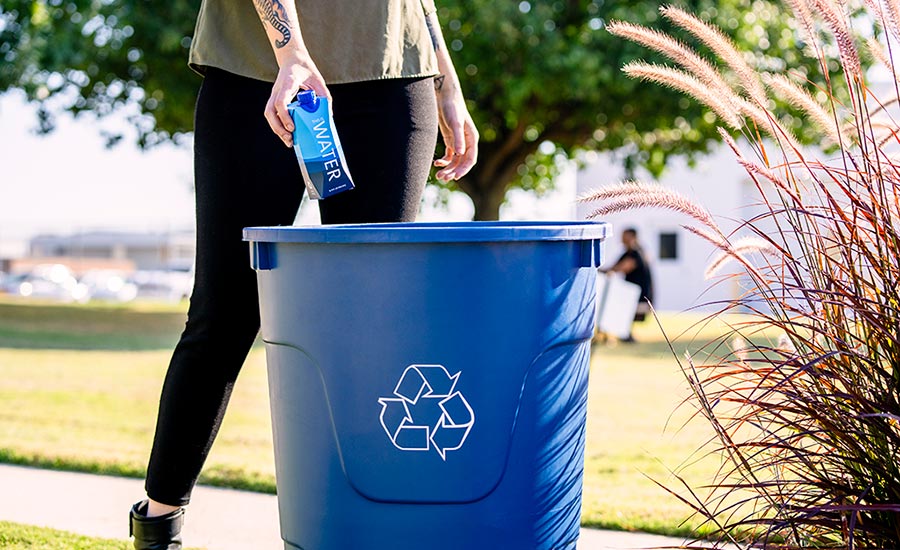
Innovating for the future
Although cartons, pouches and bag-in-box packaging offer sustainable solutions, experts note that these formats are not without challenges.
“One of the biggest challenges is keeping up with the ever-changing market — especially regarding sustainability and functionality — to deliver a product that resonates with consumers,” Tetra Pak’s Goncalves says. “One of the ways we’re addressing changing functionality demands is by continuing to innovate in the UHT space.
“The Tetra Pak Direct UHT unit is the latest step forward in aseptic technology that is designed to help optimize production and meet the needs of an ever-changing market,” he continues. “It’s the ideal choice for a wide variety of applications such as plant-based products, as well as high protein and dairy products. This is because it’s a form of heat treatment that preserves quality, taste and color while still achieving commercial sterilization for a prolonged shelf life.”
Smurfit Westrock’s Smirnova notes how regulations regarding single-use plastics have posed challenges to the industry.
“In 2024, we faced a challenge to answer the requirements of the Single-Use Plastics Directive and proposed to the market a bag-in-box tap with the attached tamper evidence,” Smirnova says. “Vitop Uno is the result of two-year [research and development] (R&D) work and significant investments in our production. This innovation guarantees that every 220 million taps will result in an extra 100 tons of plastics being recycled.
“[At the] end of last year, we introduced a new PE Lx film aimed to substitute the often used nylon,” she continues. “The new film has excellent strength properties and it is recyclable. We are always looking for new technologies and materials to reduce a bags’ weight and make them more efficient at the same time.”
Looking ahead, Smirnova predicts that the market will seek mono-material packaging solutions and avoid packaging that consumers cannot separate for recycling after use.
She also anticipates that the market will embrace packaging that incorporates more recycled plastic content without significant increase of the packaging weight.
Tetra Pak’s Gonclaves says he expects to see a rise in customization and variation in packaging such as unique QR codes and limited-edition packaging series.
“Tetra Pak Custom Printing is a unique, premium inkjet-based printing method that removes the need for plates, enabling greater design variability so a multitude of different designs can be printed on a single packaging material reel,” he says. “It’s cost-effective and with the option for smaller minimum orders, businesses can be more agile and reduce waste.”
As beverage-makers turn to packaging materials to help meet their sustainability goals, suppliers in the cartons, aseptic, pouch and bag-in-box space are eager to help them meet those goals.
Looking for a reprint of this article?
From high-res PDFs to custom plaques, order your copy today!




